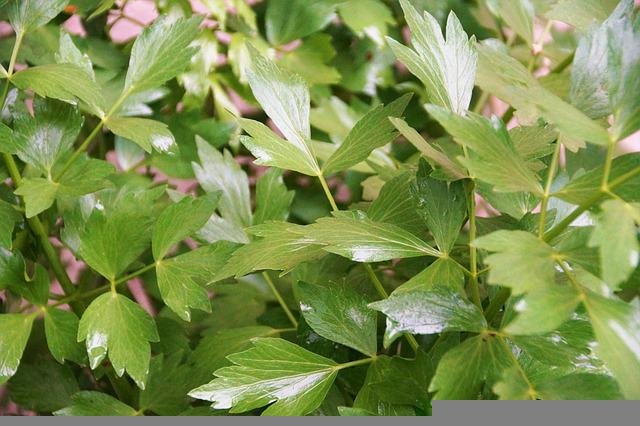
Let’s find out more about lovage, a medicinal plant used since the Middle Ages to calm pain, as a diuretic and disinfectant.
Given the numerous properties and benefits of lovage, although it is not a very common plant, it is widely used in herbal medicine and also in cooking.
Lovage: history and characteristics
The lovage, it takes its name from the Latin “levare“, that is to remove, with reference to its soothing properties. The lovage (scientific name Levisticum officinale), also known as sedan or mountain or love parsley.
It is a perennial herbaceous plant belonging to the Apiaceae family. Originally from the eastern Mediterranean, in particular from Iran, it then spread to Italy, especially in the Alpine and Apennine areas and grows both spontaneously and in cultivated gardens.
Already the Romans used it extensively in cooking and it was an ingredient of ‘ garum ‘, the sauce made with salted fish and interiors used to season first and second courses.
Since the Middle Ages it was used to calm pain, and in particular it is linked to the monastic tradition. In fact, it is the Benedictines who cultivate it in their ‘garden of the simple’ together with other medicinal plants.
The property
The properties and benefits of lovage are many: diuretic, anti-edema, antirheumatic, deodorant, antiseptic, carminative, tonic and digestive.
Thanks to the resins, tannins, sugars, vitamin C, essential oils, it is used for phytotherapeuticuse (especially the roots, but also the leaves and seeds) for its potential diuretic, antispasmodic and disinfectant action.
The lovage, in fact, can be used for internal use for the treatment of gravel, not acute kidney inflammation, for water retention and dyspepsia.
However, it must be remembered that, like all medicinal plants, medicinal use must be understood as “health medicine” and not as a medicine to treat serious diseases, which require the intervention of specialists.
Among the numerous properties and benefits there is also that of cleansing and perfuming the skin, which is why it is used for cleansing baths and as a deodorant. Just add a handful of leaves, seeds and flowers to the bath water.
You use lovage in the kitchen
In the kitchen, lovage leaves are mainly used, similar to those of celery (hence the name) and very fragrant: ideal both raw in mixed salads and as condiments for risottos and soups.
Thanks to its properties it is also widely used in the preparation of herbal teas, especially for diuretic purposes.
Pea and lovage soup recipe
To best savor the taste of this spice, we suggest you try the millet soup with peas and lovage.
- 250 gr of mixed vegetables for minestrone
- 125 gr of shelled peas (both frozen and fresh or canned)
- 1 coast of lovage
- two cups of millet
- 2 carrots
Preparation. Clean and cut the carrots into slices, wash and cut the lovage into small pieces. Dip the vegetables (minestrone) in 4 cups of cold water to which you will add the millet.
Let it simmer by putting the lid on the pan and add a pinch of coarse salt as soon as it boils. After about 20 minutes, your minestrone will be ready to serve with a drizzle of raw oil.
Contraindications

The intake of this plant is not recommended only for pregnant and lactating women or in subjects with reduced kidney or heart function.






